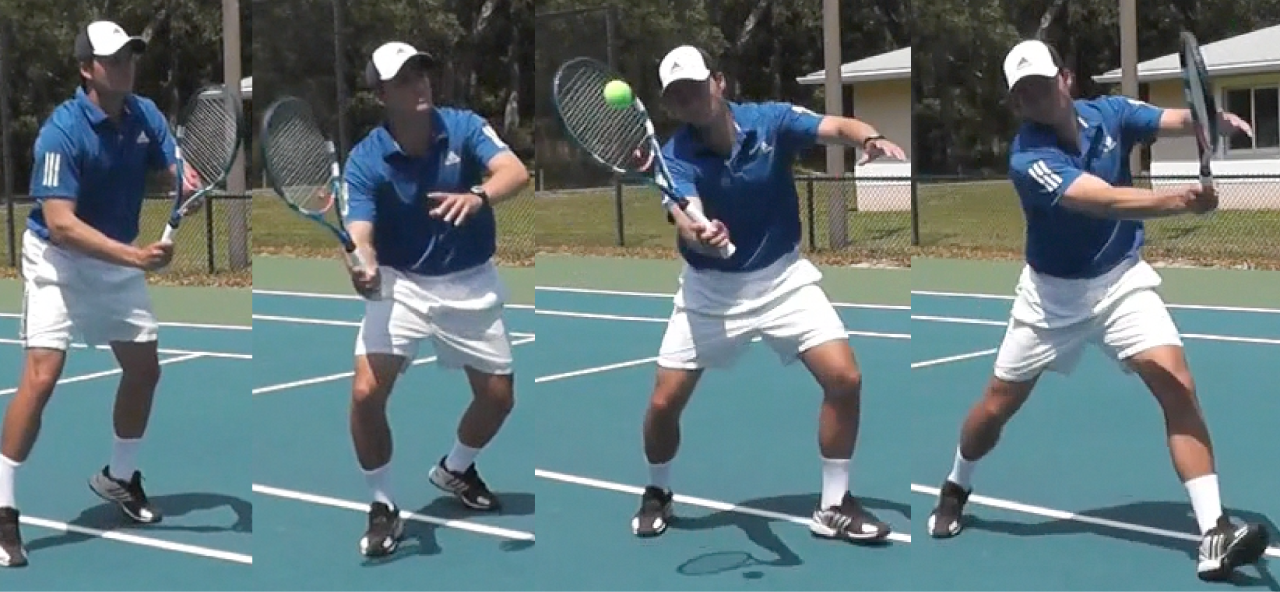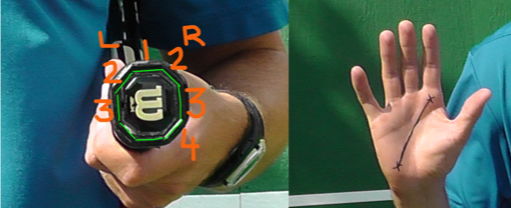The Forehand Volley

The grip – the most controversial point
The preferred grip for the forehand volley is with the grip on 3 for a young child or the grip between 2 and 3. In the 60’s is was known as the Australian grip. It’s been around for a long time, but the most commonly taught grip today is the continental or 2 grip.
The reason coaches say you need to volley with a continental grip is because you do not have enough time. This has been proven to be a myth, as it has been proven that it takes less time to change your grip then for the ball to reach you.
The reason people do not have time to change grips is because they do not train to change their grip. If you ave time to step then you have time to change your grip. The impulse is sent from the brain which is closer to the arm then the foot.
When you volley with a continental grip your racquet face is open by 45 degrees as illustrated in the basic’s section. This causes the racquet to point away from the target and requires a number of adjustments, having the racquet path go down wards across the line of the ball and also away from the target. Which does not make a lot of logical sense.

From the ready position you want to make a unit turn with the left hand remaining on the racquet.
The Swing
The swing path is a straight line like you are pushing the ball. You want to eliminate the backswing then push forward through the contact point, using the momentum and the pace of the incoming ball are your power sources. If you block the ball it means that the racquet had to slow down up to the contact point, which would cause the ball to go down.
The Arm Position
Your elbow to start bent in the ready position and remain bent through the entire shot, which will help eliminate any extra hand movement and make you play from the shoulder joint giving you a longer contact zone.
The Body
Momentum. You want to make sure that you take small steps to the ball and then take a large step as you contact the ball so you are moving through the contact zone.
Contact
The racquet face is nearly vertical, your eyes should be at the hit, the shoulders should be at 45 degree angle turned. You front foot should still be moving forward and not in contact with the court.
The Finish
You should remain sideways with your shoulders about 45 degrees facing the net post. Your left hand should be out in front like you are clapping hands. You should let the hand clap though.
*Tip
To help you keep the racquet out in front, make sure you can see the racquet out of the corner of your eye as you watch the incoming ball. Once the racquet disappears from your vision, you have taken too big a swing and have lost kinethesis which will prevent you from knowing where exactly your racquet is and what the racquet face is doing.

Drill to help with this
As you turn you should try keep your hitting hand along the same horizontal plane, feeling as if you are pushing it forward, using a net and turning whilst keeping the hand over the net will help you understand what the hand should be doing.
